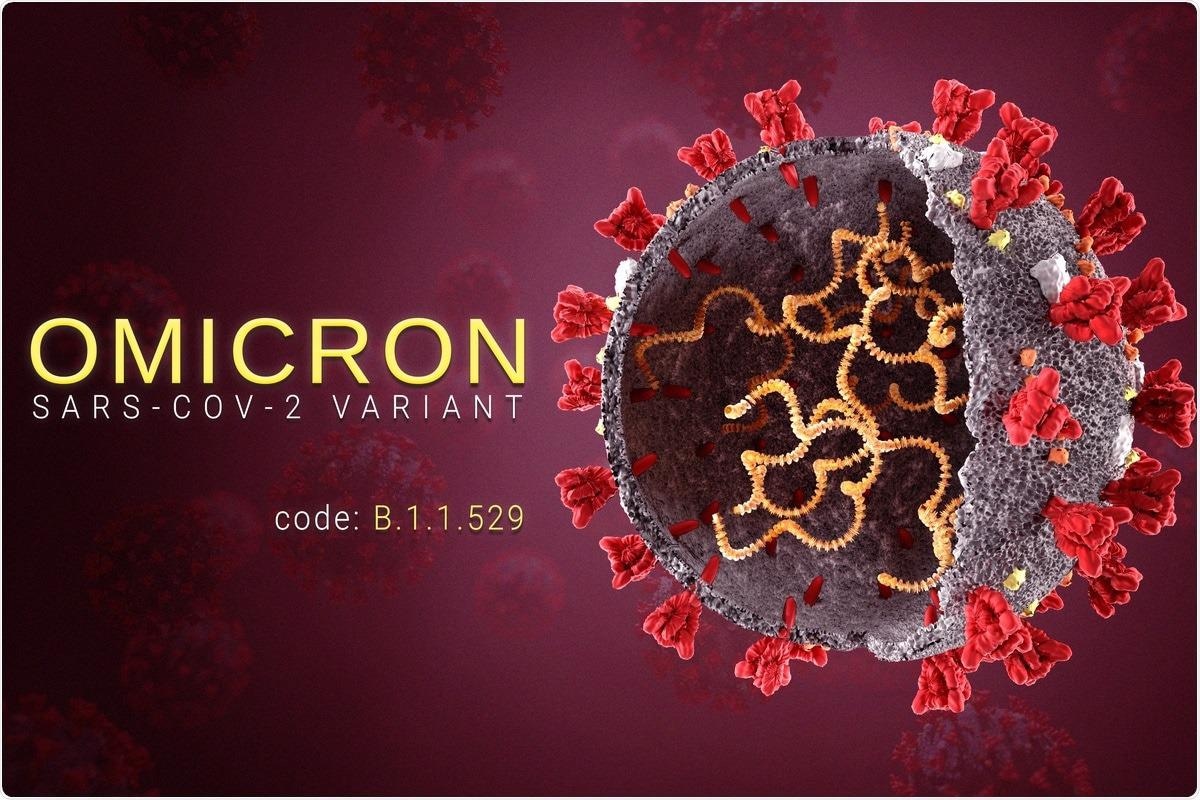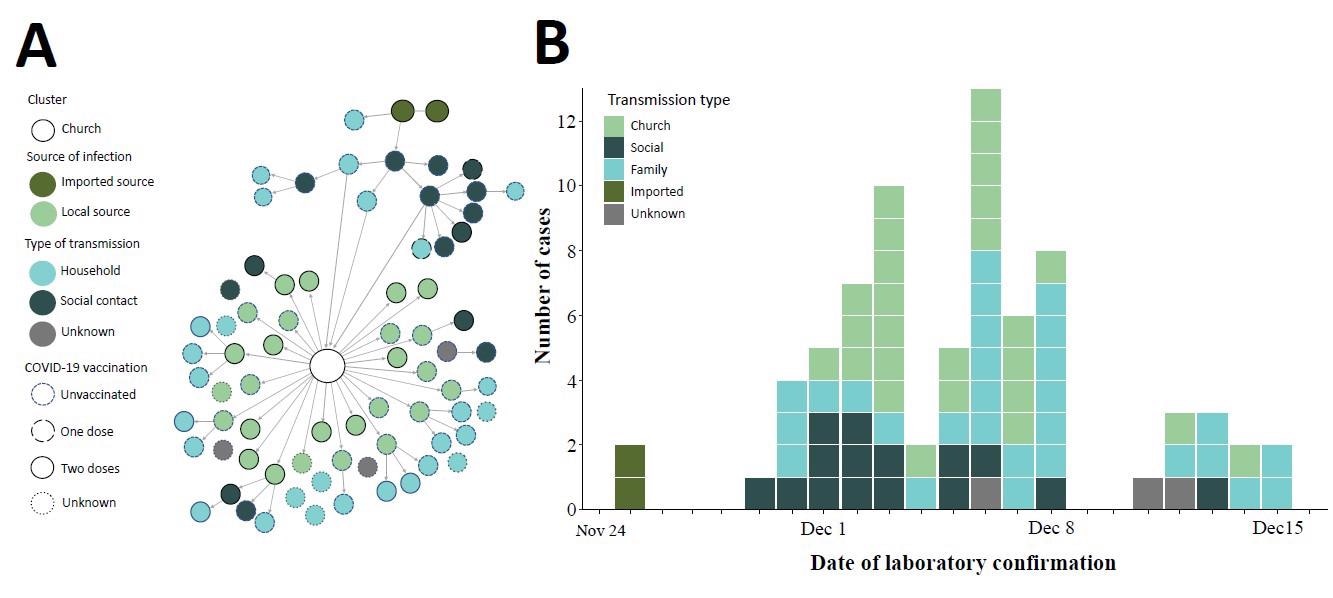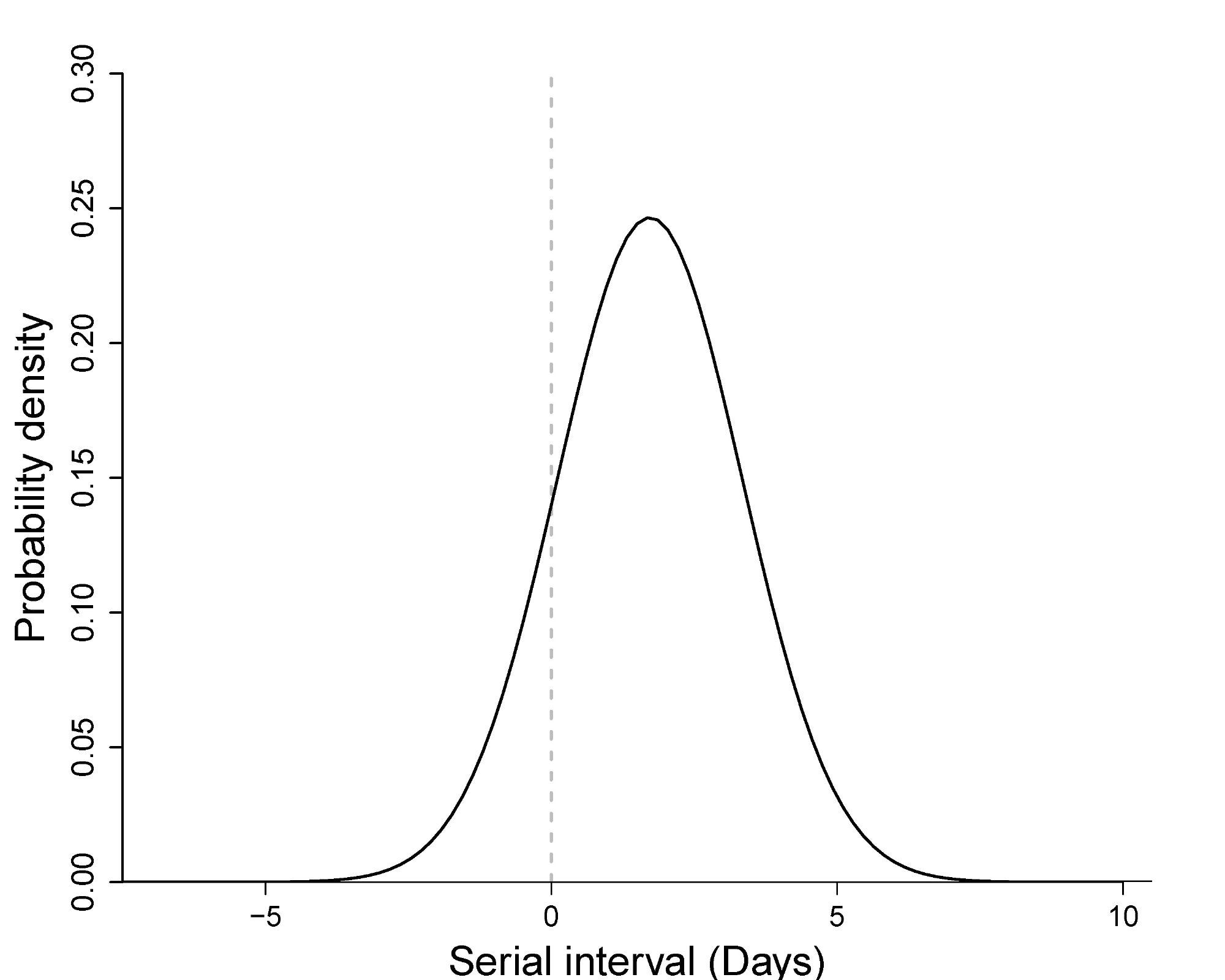Researchers in South Korea and France have conducted an analysis on individuals infected with Omicron variant (B.1.1.529) of severe acute respiratory syndrome coronavirus 2 (SARS-CoV-2) to estimate the epidemic potential and long-term prospects of this virus in circulation. They have found that the basic reproduction number (R0) for this variant is 1.90, while the mean serial interval is 2.22 days.
The observations from the current study on the Omicron variant, when compared to that reported for delta variant in a previous South Korean study, suggest that the Omicron variant is more transmissible and likely possesses faster spreading potential in the community.

Study: Serial interval and basic reproduction number of SARS-CoV-2 Omicron variant in South Korea. Image Credit: Orpheus FX / Shutterstock.com

 This news article was a review of a preliminary scientific report that had not undergone peer-review at the time of publication. Since its initial publication, the scientific report has now been peer reviewed and accepted for publication in a Scientific Journal. Links to the preliminary and peer-reviewed reports are available in the Sources section at the bottom of this article. View Sources
This news article was a review of a preliminary scientific report that had not undergone peer-review at the time of publication. Since its initial publication, the scientific report has now been peer reviewed and accepted for publication in a Scientific Journal. Links to the preliminary and peer-reviewed reports are available in the Sources section at the bottom of this article. View Sources
Basic reproduction number and serial interval
R0 represents the average number of new cases generated directly from one infectious person in a completely susceptible population, i.e., in the absence of effective vaccines or control measures. It is an epidemiologic metric that indicates the transmission potential of infectious agents. If R0 > 1, the epidemic will spread, and if R0 < 1, the epidemic will not spread.
Serial interval refers to the time interval between successive cases. It is estimated from the time of symptom onset in primary/index case to the time of symptom onset in secondary case. Like R0, serial interval is another important epidemiological measure that serves as an important parameter in epidemic transmission models used to design infection control strategies.
A pre-print version of the study has been published on the medRxiv* server, while the article undergoes peer review.

Transmission chain (A) and epidemic curve (B) of laboratory-confirmed SARS- CoV-2 Omicron variant infection associated with the church (n=74) in South Korea.
Background
Towards the end of November 2021, World Health Organization (WHO) designated the new SARS-CoV-2 variant B.1.1.529 a variant of concern and named it Omicron. While delta continues to be the dominant SARS-CoV-2 variant prevalent worldwide, the emergence of the new variant Omicron (B.1.1.529 ) is causing serious concerns among the public health authorities due to the reports on its heavily mutated spike protein that could have unexpected consequences.
Nevertheless, the transmission potential of the Omicron variant in comparison to the Delta variant remains unclear. Therefore, to throw more light on the epidemiological transmission capacity of the new variant, the team conducted the present study in South Korea, which is currently experiencing the community transmission of the SARS-CoV-2 Omicron variant (B.1.1.529).
What did the researchers do?
The team aimed to estimate the serial interval and basic reproduction number (R0), involved in the community transmission of the Omicron variant in South Korea.
The study was based on publicly available data on cases of the Omicron variant from the South Korean public health authorities. Data were collected from November 25, 2021 – December 16, 2021, when the community transmission initiated in South Korea originating from the imported cases.
Contact tracing data and demographic characteristics of the cases, including age, the suspected source of infection, and date of symptom onset were collected. Serial interval distribution was estimated by fitting a normal distribution. To calculate R0, serial interval distribution acquired from the data was used as a proxy of generation time distribution.
Study findings
Of the total 131 cases associated with Omicron, 31% (n=23) of the cases had already received two doses of SARS-CoV-2 vaccination and were confirmed breakthrough coronavirus disease 19 (COVID-19) infection instances. Eighteen transmission pairs were identified with a known date of symptom onset for both primary and secondary cases.
 Estimated serial interval distribution of the SARS-CoV-2 Omicron variant. The solid line indicates a fitted normal distribution.
Estimated serial interval distribution of the SARS-CoV-2 Omicron variant. The solid line indicates a fitted normal distribution.
The mean serial interval was estimated to be 2.22 days (95% Credible Interval [CrI], 1.48–2.97), and the standard deviation of the serial interval estimate was found to be 1.62 days (95% CrI, 0.87–2.37). The R0 for the Omicron variant outbreak in South Korea was estimated to be 1.90 (95% CrI 1.50–2.43).
A previous Korean study on the Delta variant had observed the mean serial interval to be 3.3 days and R0 to be 1.0. The comparison between the two studies indicated that the Omicron variant is much more transmissible. Therefore, strict COVID-19 specific control measures and COVID-19 vaccination remain essential elements to reduce the community transmission of the Omicron variant.
Limitations
As of early December 2021, eighty percent of the Korean population had received two doses of COVID-19 vaccination. However, the current study did not analyze the impact of COVID-19 vaccination against transmission. Therefore the results might not show the exact scenario that would occur in a completely susceptible population and would not be generalizable for resource-limited countries.

 This news article was a review of a preliminary scientific report that had not undergone peer-review at the time of publication. Since its initial publication, the scientific report has now been peer reviewed and accepted for publication in a Scientific Journal. Links to the preliminary and peer-reviewed reports are available in the Sources section at the bottom of this article. View Sources
This news article was a review of a preliminary scientific report that had not undergone peer-review at the time of publication. Since its initial publication, the scientific report has now been peer reviewed and accepted for publication in a Scientific Journal. Links to the preliminary and peer-reviewed reports are available in the Sources section at the bottom of this article. View Sources
Journal references:
- Preliminary scientific report.
Kim D., Jo J., Lim J-S., and Ryu S. (2021) Serial interval and basic reproduction number of SARS-CoV-2 Omicron variant in South Korea. medRxiv. doi: https://doi.org/10.1101/2021.12.25.21268301, https://www.medrxiv.org/content/10.1101/2021.12.25.21268301v1
- Peer reviewed and published scientific report.
Kim, Dasom, Sheikh Taslim Ali, Sungchan Kim, Jisoo Jo, Jun-Sik Lim, Sunmi Lee, and Sukhyun Ryu. 2022. “Estimation of Serial Interval and Reproduction Number to Quantify the Transmissibility of SARS-CoV-2 Omicron Variant in South Korea.” Viruses 14 (3): 533. https://doi.org/10.3390/v14030533. https://www.mdpi.com/1999-4915/14/3/533.